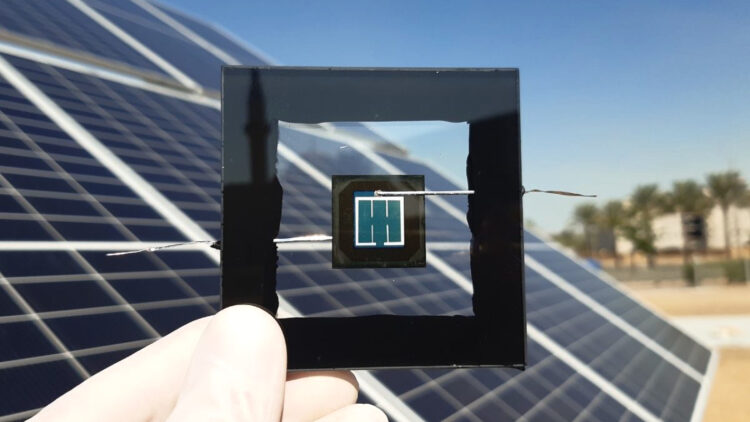Recent innovations in solar technology from researchers in China have garnered significant attention within the global renewable energy sector. The development of highly efficient perovskite solar cells that utilize silver-based components threatens to challenge the dominance of traditional silicon-based solar panels. This means that the necessity for panels may soon come into serious doubt.
The new era of solar power: The rise of perovskite solar cells
At Northwestern Polytechnical University in Xi’an, researchers have created a groundbreaking four-terminal (4T), semi-transparent, perovskite-silicon tandem cell. This innovation integrates a top perovskite cell with an indium oxide (In2O3) sputtering buffer layer (SBL) that was fabricated through a cost-effective method, making it viable for industrial applications.
“The SBL plays a crucial role in safeguarding the perovskite absorber and the underlying electron transport layer (ETL) from damage during the deposition of the indium tin oxide (ITO) electrode,” says Li Can, the research’s lead author.
The team optimized the deposition rate for stoichiometric In2O3 films, leading to high transmittance and strong protective qualities, which helped achieve a power conversion efficiency of 20.20%, on par with opaque variants.
When combined with a silicon bottom cell, this top perovskite cell reached an overall efficiency of 30.04%, while retaining 80% of its initial efficiency after 423 hours of continuous light exposure. This marks it as one of the highest-performing 4T perovskite-silicon tandem solar cells to date.
The role of silver in enhancing the efficiency of solar cells
Meanwhile, a different research team from the University of Chinese Academy of Sciences in Beijing has developed an ultrathin solar cell using a Gires-Tournois resonator, which enhances light absorption capacity by a significant margin. By utilizing a silver reflective back mirror, they have optimized light capture, raising the average absorptivity to approximately 85%.
“The effectiveness of the proposed theoretical framework was verified through optical simulation and SCAPS software analysis, providing a foundation for experimental research on ultra-thin perovskite solar cells,” explains Ning Dai, the research’s lead author.
This solar cell features a 10 nm electron transport layer composed of zinc oxide (ZnO), a 45 nm perovskite absorber, a 5 nm hole transport layer made out of nickel(II) oxide (NiOx), and a 60 nm silver black mirror. Simulations indicate that the cell could achieve a photoelectric conversion efficiency of around 26%, exceeding that of traditional solar cells. Under optimal conditions, this efficiency may reach as high as 27%.
Additionally, its ultrathin design drastically cuts down on material costs and reduces the lead content, positioning it as an eco-friendly alternative. However, achieving these desired efficiencies requires vacuum deposition techniques, which may pose challenges for commercial scalability.
What do these solar cells mean for the future of solar panels?
When compared to perovskite solar cells, solar panels exhibit notable disadvantages, especially regarding efficiency and material use. Traditional silicon panels generally have a lower conversion efficiency ranging from 15% to 20%. This difference creates pressures on solar panel manufacturers to innovate in order to stay competitive.
Furthermore, the materials required for traditional solar panels often entail higher costs and raise environmental concerns. In contrast, perovskite solar cells are thinner and less material-intensive, which leads to lower production costs and reduced lead content. This makes them appealing alternatives with a lower environmental impact.
Indeed, unless solar energy manufacturers adapt quickly, these cells pose strong competition, threatening their market share and could even lead to their decline.
As researchers make further advancements in these perovskite cells, the landscape of solar energy is shifting positively. It paves the way for materials and designs that offer greater sustainability. Ultimately, this revolution could usher in a brighter, greener future for all.

